Can I swim breaststroke to start the triathlon?
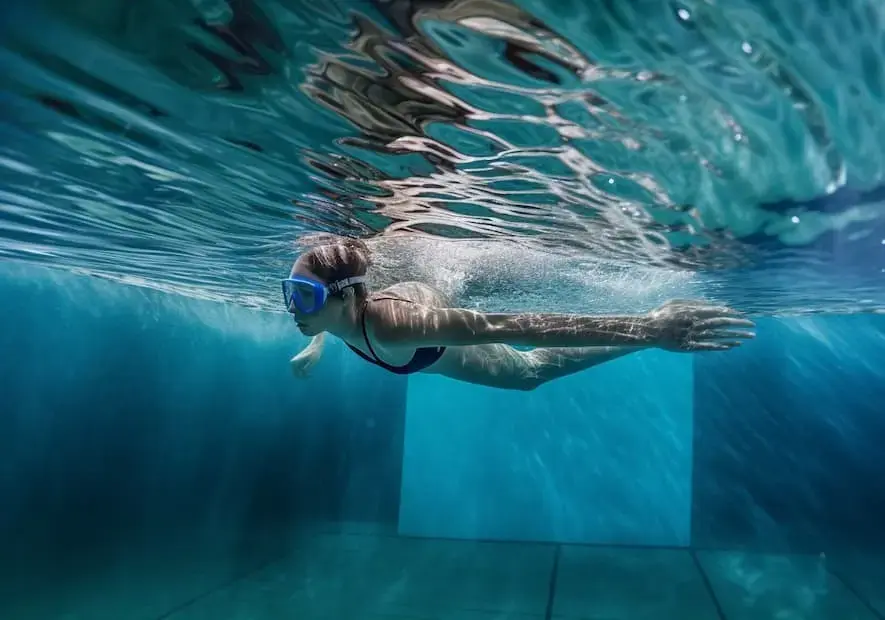
- 1. Introduction to Breaststroke Swimming in Triathlon
- - The Growing Popularity of Breaststroke Swimming in Triathlon
- - Understanding the Concept of Swimming in a Triathlon
- 2. The Pros of Breaststroke Swimming in Triathlon
- - Efficiency and Energy Conservation with Breaststroke
- - Ease of Navigation and Visibility in Open Water
- 3. Challenges of Breaststroke in Triathlon
- - The Speed Difference Compared to Other Swimming Styles
- - Posture and Impact on Subsequent Race Segments
- 4. Considerations for Training Breaststroke for Triathlon
- - Training Techniques for the Breaststroke Swimmer
- - Transitioning from Swimming to Cycling and Running
- 5. Tips for Incorporating Breaststroke into your Triathlon
1. Introduction to Breaststroke Swimming in Triathlon
Welcoming you to the intriguing realm of triathlon, where the might of human endurance is truly tested! Beyond the realm of traditional swimming styles, we unwrap the benefits and delights of breaststroke swimming within the triathlon sphere. This often-underestimated stroke has been growing in popularity among triathletes, offering a unique blend of dynamism and resiliency. Now, you might ponder, what makes breaststroke special for this grueling three-part race? Let's delve more, shall we? An agile combination of power, ease of navigation, and energy efficiency, breaststroke offers sportspersons a strategic advantage. Together, let's navigate this realm of fascinating amalgamation, where water, land, and determination all intertwine!
- The Growing Popularity of Breaststroke Swimming in Triathlon
Over the past few years, there's been a noticeable upswing in the popularity of breaststroke swimming in triathlon events. Time and again, novices and seasoned athletes alike are gravitating towards this style. But why this sudden preference for breaststroke? To start with, its technique is significantly easier to grasp for beginners, making it an excellent entry-point into the unchartered waters of triathlon swimming. Moreover, the energy-efficient nature of breaststroke ensures you conserve as much stamina as possible. This is incredibly crucial in triathlon events where athletes need to manage their energy for biking and running segments as well. The overarching benefits of easy navigation and superb visibility offered by breaststroke, especially in murky open water situations, is another major perk that's hard to overlook. In a nutshell, it's clear why the breaststroke is becoming the go-to choice for triathletes. It's not just about getting from point A to B; it's about doing so in the most efficient, strategic manner possible. The breaststroke ticks all these boxes making it an ideal swimming style for aspiring and professional triathletes. But remember, every stroke has its challenges, so it's essential to train smart and be race-ready!
- Understanding the Concept of Swimming in a Triathlon
Triathlons can be exceptionally exciting and challenging due to the multiplicity of sports involved. Of all the disciplines, swimming often causes a significant degree of apprehension among the participants. Let's dive deeper into understanding the concept. A triathlon typically starts off with a swim, which might be in a pool, a lake, or the sea, essentially adding an additional layer of complexity and nuances that the competitors should conquer. Your proficiency not simply in swimming, but specifically in swimming under these varied and possibly unpredictable conditions, can significantly influence your overall race. Choosing the breaststroke style could potentially make this section more manageable for some. While it may not be the quickest method, it is frequently preferred by many triathletes because of the many comforts and benefits it offers, including rhythm and visibility. Essentially, understanding swimming for a triathlon means recognizing the context and challenges such a sprint presents, and making informed decisions, like possibly choosing the breaststroke, to tailor your strategy for enhanced performance and speed during the race. Embrace the water, the chill, the uncertainty, and unleash your inner mermaid or merman. After all, you're not just swimming: you're racing. But don't forget, it's just the beginning. The bike and run segments are yet to come.
2. The Pros of Breaststroke Swimming in Triathlon
Breaststroke holds several advantages for triathlon swimmers, making it a popular choice in competitive scenarios. One of its major benefits is energy conservation. Despite being slower than freestyle, the breaststroke allows competitors to maintain steadier stamina, vital for endurance events like triathlons. Secondly, by its very nature, the breaststroke position promotes better visibility and navigation in open water swimming. This helps triathlon participants avoid collisions and maintain their desired race path. Fully harnessing these pros often leads to a more efficient and controlled performance in the swimming segment of a triathlon.
- Efficiency and Energy Conservation with Breaststroke
When it comes to efficiency and energy conservation, the breaststroke swim method truly shines in triathlon competitions. Unlike other strokes that demand strenuous upper body effort or quick, repetitive motions, the breaststroke allows a steady, fluid rhythm that reduces the strain on your body. Are you aware that a proper breaststroke technique enables the swimmer to cover a decent distance with fewer strokes? That's correct! The breaststroke often consumes less energy in comparison to other strokes. This is a substantial advantage in a triathlon, where conserving energy for biking and running stages is pivotal. But, why exactly is breaststroke more economical? Here's a simple explanation: the breaststroke allows a swimmer to glide through the water after each stroke, using the momentum generated to move forward without exerting additional effort. Moreover, it's a well-known fact among triathletes that the ability to control breathing rhythm contributes greatly to maintaining stamina. Luckily, in breaststroke, breath control is more manageable, enabling a more relaxed and efficient oxygen intake. In conclusion, when performed correctly, the breaststroke can be a game-changer in a triathlon, enhancing your energy conservation and boosting your performance in the subsequent race segments. Are you ready to give breaststroke a shot in your next triathlon? Remember, practice is key, and with time, you'll surely master this art.
- Ease of Navigation and Visibility in Open Water
The breaststroke is a unique style of swimming that offers ease of navigation and visibility in open water, making it an appealing option for triathlon athletes. Unlike freestyle or butterfly which require the swimmer's head to be submerged most of the time, breaststroke allows for a more consistent gaze ahead. This is particularly beneficial in triathlon events, where keeping an eye on the end-point buoy can give competitors a strategic advantage, ensuring they veer less off course. Swimmers, thus, don’t have to break stroke to get their bearings, which lets them conserve energy. It's akin to having a built-in compass, guiding you with every stroke. Moreover, the rhythmic pattern of breaststroke swimming permits better timing of your breaths, significantly lowering the risk of hyperventilation, an issue often encountered in open water due to anxiety or unfamiliarity with the environment. The breaststroke, with its predictable cycle of strokes and breaths, serves as a calming influence amid the chaos of a triathlon. In essence, the ability to easily navigate and maintain better visibility makes breaststroke an engaging choice for triathletes looking to gain an edge in the swimming segment of the race. However, in no way is it an easy road. Nonetheless, with consistent training and adaption to specifics, one can yield considerable performance enhancements.
3. Challenges of Breaststroke in Triathlon
While the breaststroke in triathlon has several undeniable advantages, it's important to address the challenges that come with it to effectively integrate it into your race strategy. A notable hurdle is the speed disparity against other swimming styles. Given its nature, the breaststroke is generally slower, potentially putting you at a time disadvantage right from the start of the race. Furthermore, the upright posture required for the stroke could strain the lower back over time, affecting your performance in the subsequent segments of the race - cycling and running. Identifying these challenges can help refine your training and help mitigate potential issues during the race.
- The Speed Difference Compared to Other Swimming Styles
One challenging aspect often faced by triathletes opting for breaststroke is the speed difference compared to other swimming styles. Typically, swimming styles like freestyle or front crawl are distinguished by their fast-paced, high-energy performance. On the contrary, breaststroke isn't championed for its speed. The nature of this swim stroke, although more energy-conserving and better for navigation in shifting open waters, is typically slower. This distinction often means that breaststroke swimmers may find themselves at a minor disadvantage during the initial swimming leg of a triathlon. This deficit can be unsettling for some, especially in a race where every second counts. However, by incorporating strategic training techniques and playing to the strengths of breaststroke, competitors can overcome this speed bump. So, while the disparity in tempo may initially pose a hurdle, remember, it doesn't necessarily translate to a disadvantage in the broader context of triathlon. It goes to show that the discipline of triathlon is not just about speed, but also about endurance, perseverance, and strategic execution across three diverse sports.
- Posture and Impact on Subsequent Race Segments
The posture maintained during the breaststroke swimming segment in a triathlon can greatly impact the following race segments. Unlike freestyle, which encourages a flat, streamlined position in the water, the breaststroke can cause one to hold their body in a more vertical position. This mitigates drag, but it can also strain the neck, shoulders, and lower back. The awkward twisting and turning of the spine may adversely affect energy levels when you transition to the cycling and running segments. Moreover, the rhythm of the breaststroke – inhaling during the glide and exhaling during the sweep and kick – might alter your normal breathing pattern and potentially lead to fatigue. It is therefore crucial to focus on maintaining a good posture during breaststroke, with a straight spine and well-coordinated movements. It's important not to compromise this for the sake of speed. Understanding this challenge can help you derive a training strategy that prepares you for the after-effects and gets you ready for the next segments of the race. Managing your posture effectively might make all the difference to your overall performance in a triathlon.
4. Considerations for Training Breaststroke for Triathlon
When preparing for a triathlon, training for breaststroke swimming requires careful consideration. The smooth flow of the breaststroke swim, while energy conserving, requires precise timing and coordination. Investing time in strengthening your technique will improve efficiency, keeping you buoyant and reducing fatigue. Remember, the swimming segment in a triathlon isn't just about speed; it’s about preserving energy for the bike and run segments that follow. Also, mastering the transition from swimming to cycling and running could mean the difference between a smooth race and exhausting yourself too early on. So, lace up those running shoes and mount your bike, blending breaststroke training into your fitness routine for triathlon success.
- Training Techniques for the Breaststroke Swimmer
As you embark on your journey to master the techniques specific to breaststroke swimming for triathlon, it's crucial to remember that practice and consistency are your greatest allies. The stroke can seem complex at first, with its unique mix of kicks and arm movements, yet each piece plays an important role in propelling you through the water efficiently and effectively. One of the key techniques necessary to ace this style is mastering the 'whip kick'. The rotation of your feet in a whip-like circle is not only pivotal to speed gain but also ensures minimal energy expenditure, a significant advantage in a triathlon. Remember the dance of the arms too. Coordinating your pull and recovery with your kick can make-or-break your stroke efficiency. Aim to reach forward and pull back powerfully, utilizing each muscle group optimally. Another critical aspect to remember when training for a breaststroke swim is your body position. Preserving a horizontal body position during your glide phase keeps you swimming ‘downhill’, reducing drag, and making your strokes more effective. While training, focus on building your technique first, then gradually work to increase your speed. By dedicating yourself to this process, you'll be well on your way to integrating a proficient breaststroke into your triathlon repertoire.
- Transitioning from Swimming to Cycling and Running
Transitioning from swimming to cycling and running is a pivotal moment in a triathlon, as this changeover not only signifies a shift in movements but also a drastic alteration in the use of muscle groups. Although breaststroke swimmers tend to have efficient energy conservation, the posture required in breaststroke can potentially impact the comfortability of the subsequent cycling and running stages. That's why it is fundamental to track your body movements and pay keen attention to conditioning your muscles properly. During training, try to simulate transitions between the different phases of the race and focus on hip flexibility exercises. These exercises will help accommodate the change from the horizontal swimming posture to the upright positions required for cycling and running. It's important not to exhaust yourself in the swimming stage completely; in order to maintain a consistently high performance, you should save some energy for later. Therefore, manage your pace smartly and remember your end goal. Furthermore, consider investing in triathlon-specific gear, such as wetsuits engineered for quick removal during these transitions. Practice makes perfect; thus, the more you train transitioning, the less daunting it becomes. Punctuate your training with these transition stages, down to the smallest details to make your actual race day as smooth and efficient as possible.
5. Tips for Incorporating Breaststroke into your Triathlon
Breaststroke can indeed prove to be a strategic move in your triathlon journey, as its unique benefits can make a world of difference in your performance. However, using it effectively requires proper training and understanding. Firstly, reserve it for situations where energy conservation is critical, such as choppy water conditions or when fighting strong currents. Strategically alternating between various strokes can maintain your energy levels throughout the race. Secondly, always stay adaptable. You see, triathlons are unpredictable - from water conditions to your own physical state; everything can change rapidly. Here, your ability to switch to breaststroke seamlessly can come handy. Thus, practise transitions thoroughly. Remember, in the end, comprehension of your strengths and adapting the race strategy accordingly will set you apart in a triathlon!
- Ideal Situations for Breaststroke in Triathlon Races
Ideal situations for using breaststroke in a triathlon races are diverse and plentiful. Firstly, breaststroke is notably beneficial when the course presents with choppy water conditions. Unlike freestyle, breaststroke keeps the swimmer's head above water, allowing for better visibility and breath control. Triathletes may find themselves in waters with varying temperature, and the breaststroke provides an efficient strategy to maintain core body heat. When we talk about crowded race starts, a swift kick in breaststroke can create needed space and prevent unintentional interruptions. This stroke also keeps you from veering off course, potentially saving you from swimming extra yards. Another crucial aspect to consider is energy conservation. If a particular segment of the race is exhausting, switching to breaststroke can allow your body to recover slightly while sustaining forward movement. Triathlon athletes must remain flexible during competition and respond quickly to shift in circumstances. Understanding when to employ the breaststroke can be a significant game changer, particularly for those who excel in this style.
- Adapting to Changing Race Conditions
Adapting to changing race conditions in a triathlon poses a unique challenge to any athlete. Faced with open water swimming, your usual pool-based breaststroke techniques may need some modification. This requires a certain level of flexibility and adaptability in your training regimen. For instance, the turbulent water conditions can disrupt your rhythm, and strong currents or winds may affect your speed and direction. Moreover, cold water temperatures might cause muscle cramps, making it difficult to maintain proper form and speed. As an athlete, it's essential you understand these variables and strategize accordingly to thrive in unpredictable race conditions. This includes familiarizing yourself with the waves and learning to swim with them rather than against them. You will also need to adapt your swimming technique to conserve energy, while still maintaining a decent speed. For example, some triathletes use a modified version of the breaststroke known as the 'heads-up' breaststroke, which can conserve energy and provide better visibility in choppy water. Above all, do not forget the importance of maintaining a strong mental game. Staying calm and focused amid challenges will pave the way for a smoother breaststroke segment in your triathlon - flexing your resilience in this grueling test of endurance.
In conclusion, breaststroke can indeed be a viable option to start a triathlon. Although the speed delivered might be less than freestyle, the energy efficiency and ease of navigation make it a tempting choice. However, its impact on your posture and subsequent race segments should be considered. Practice with proper training techniques and ready yourself to adapt to changing race conditions to optimize breaststroke usage in a triathlon.










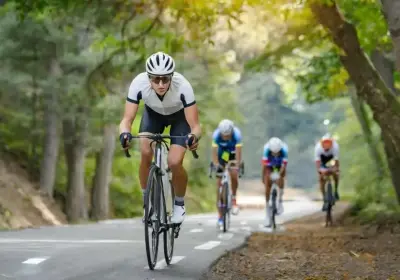


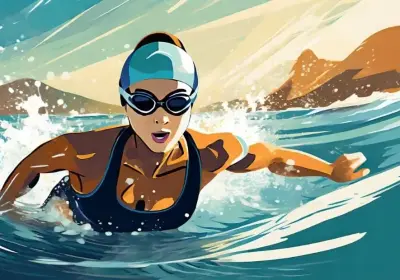
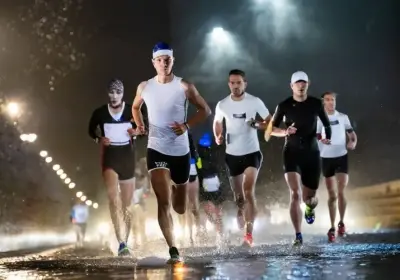


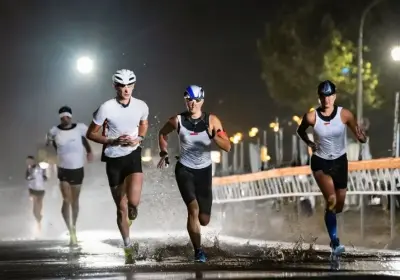






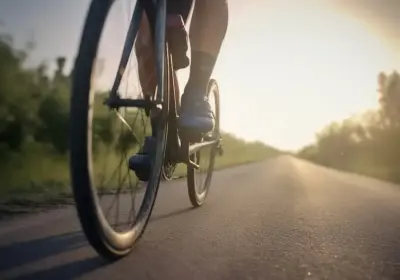


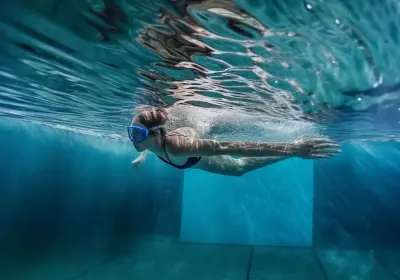
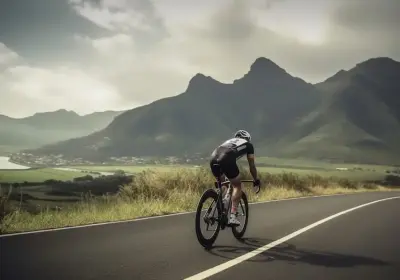
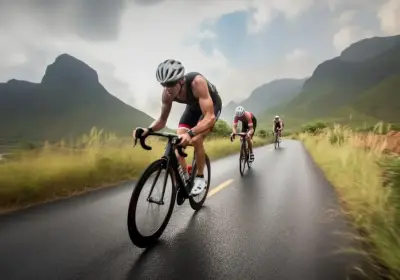








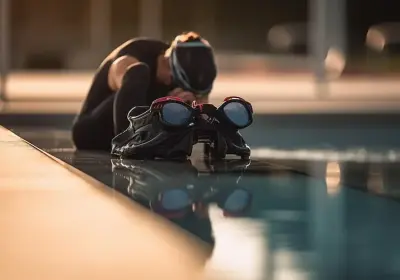
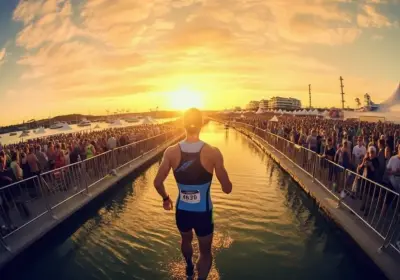






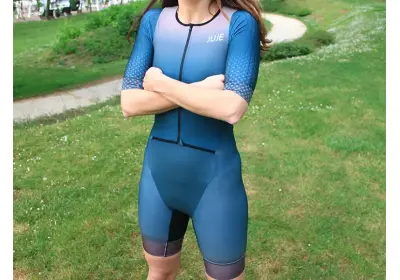



Leave a comment